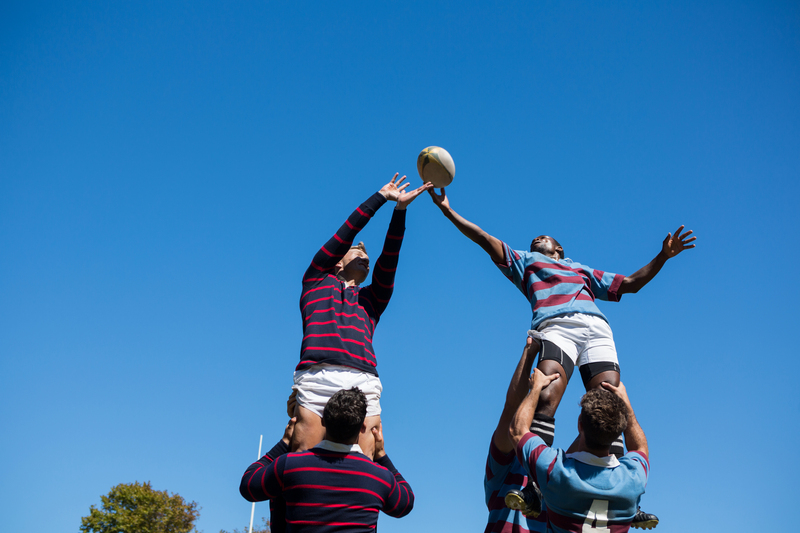What Are The Best Rugby Gambling Strategies?
Do you love betting on rugby matches and are looking for ways to turn your hobby into a profitable venture? Then you have found the right place! In this article, we are going to share with you rugby gambling strategies that are going to boost your bankroll and win rate instantly!

Bet On Multiple Rugby Teams To Win The Competition
In rugby, club teams compete against each other in a league. At the end of the season, the most successful clubs typically take part in a sudden-death playoff until a champion is crowned. During the season you can make what is called a futures bet. With a futures bet you are trying to predict the outcome of an event far in advance which requires multiple events to happen to be correct.
One of the most popular types of rugby futures wagers is predicting which team will win the entire competition. While this wager often provides fantastic odds it is very risky as there are many teams to choose from. A highly profitable strategy is to hedge by placing money on multiple different teams. For example, you could place money on a favorite, a middle-of-the-pack team and then an underdog who nobody thinks will win.

By backing multiple teams you drastically increase your win rate but at the same time give yourself great odds to walk away with a bundle of cash. Before you make this style of wager double-check that the odds ensure that you are going to profit no matter which one of your team’s manages to win the competition. Our favorite strategy is to pick two teams who are heavily favored to win the competition and then pick another two who are major underdogs. If the favorites win then you cash out a small amount but if one of the underdogs wins you cash out huge!
Try Some Exotic Strategies
Let’s face it beating the traditional rugby gambling markets is no easy feat. You are up against professional sportsbooks who are using lots of stats and high-powered models. These markets are also highly efficient as incorrect odds are quickly altered by public betting. For example, let’s say the All Blacks are playing the Springboks and the All Blacks are a heavy favorite at 1.5 to 1 but then one of their star players is out injured. Once the injury news is released lots of money will be placed on the Springboks and the line will quickly increase to 2 to 1.
You give yourself a much better chance of winning by participating in exotic rugby gambling markets where there is little public interest and the sportsbooks don’t spend a lot of time setting super accurate odds. Some great exotic wagers include:
- Number of penalties
- Will a player get sent off
- Number of yellow cards
- Meters kicked
- Number of penalty goals
- Over/under score
- Number of lineouts
These exotic rugby wagers are great fun and they are filled with profitable opportunities. To increase your chances of success you should specialize in particular types of these exotic wagers. For example, if you are an expert on rugby kicking then predicting the number of kicks in a game or the number of penalty goals could be the perfect wagers for you.
While these exotic rugby bets are definitely profitable they also have the added benefit of making a game exciting no matter the score. For example, if you are watching a boring match played in the rain where two teams are just happy to run it up with the forwards then kick the ball back and forth, you could turn this game into an absolute thriller by betting on the number of knocks on or the numbers of lineouts.
Find Some Top Tipsters
When you first start gambling on rugby you can’t expect to be a winner right away. It can take years of studying the game to develop an edge and consistently beat the sportsbooks. So why not speed up the process by using the services of world-class tipsters. These rugby tipsters are either professional gamblers or previously worked for sportsbooks. You can find numerous services online and many will even provide some free tips every week! But remember to track their results before you make live wagers to see if these tipsters are actually skilled as there are many who are not winning punters.
Start Gambling Small
Have you heard the saying don’t bet above your pay grade? Well, there is a good reason for it! Many rugby gamblers have gone broke and lost their entire bankroll because their stake size was far too big in comparison to their bankroll. Gambling is a cruel mistress and no matter how good you are at predicting match outcomes you will go through periods of bad luck where you lose. To ensure these losing periods don’t destroy your gambling career you need to practice disciplined bankroll management. Most professional rugby bettors only wager with 1% to 2% of their entire bankroll on each individual wager. For example, if you have $1000 to gamble with, you should only bet $10 to $20 on each wager. This may seem small but you can quickly increase your stake size as your winnings compound.
Start Betting On Rugby Matches Today!
Now you know some fantastic and easy-to-implement rugby gambling strategies it is time to put your money where your mouth makes some wagers! All you need to do is sign up to a sportsbook, deposit instantly, pick a match, select your wager and watch the money come in! Remember to protect your winnings by following our bankroll management techniques.
